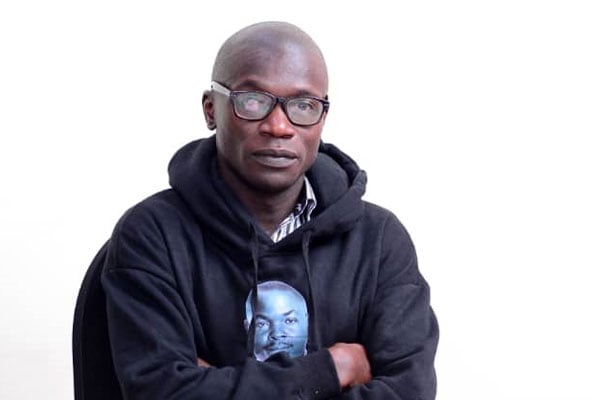Ugandans don’t understand national symbols – report

Joshua Cheptegei (centre) poses with the Uganda flag as he celebrates after winning the athletic’s men’s 5000m final during the 2018 Gold Coast Commonwealth Games at the Carrara Stadium, Australia, on April 8, 2018. PHOTO/AFP.
What you need to know:
- Another shocking revelation from the trainings, according to the report, was that many of the participants were also not well versed with the number of colours of the Uganda flag.
After months of field visits across four districts of Uganda, a report shows that there is need to unpack the national symbols and values as a way of informing and awakening what is termed as “the underlying spirit and love of Ugandans for their country.”
The report titled The National Symbols and Values: Implication for Patriotism and National Development Project, was conducted by Makerere University’s Research and Innovative Fund (RIF), Makerere University, funded by the Government of Uganda.
Under the current Constitution, according to the report, some to Uganda’s national symbols are the flag and the national anthem, and that these symbols have all that the nation needs to communicate its vision, aspirations and values.
“The values identified in the National symbols include unity, peace, freedom, Pan-Africanism and honour of God,” the report says, adding that those values are enshrined in the Constitution under National Objective 29, which requires a citizen “to be patriotic and loyal to Uganda and to promote its well-being.
Although the symbols and value are well laid out in the Constitution, the report says they are not known, shared and cherished by most of the nationals, yet they are the glue that would define “our national identity and culture.”
“Feedback from the trainings illustrated a variety of misconceptions about patriotism and knowledge, the gap among the participants on national symbols and values and the Constitution of the Republic of Uganda,” the report says, adding that this was clearly demonstrated in the discussions and written evaluation by the participants at the end of every training per region.
During the many trainings conducted across the country, it became apparent that issues discussed looked new to most of the participants. One of the participants from Fort Portal City, according to the report, pointed out that the ignorance on how to use the Constitution was not their fault because little has been done about popularising it.
“It’s my first time to open the Constitution [book] of Uganda and read it since I was born,” the participant said.
Another shocking revelation from the trainings, according to the report, was that many of the participants were also not well versed with the number of colours of the Uganda flag.
“During a session on the National Flag, the responses given were three and four colours. Those who gave three colours based their argument on the lessons that they had received during primary school, where they were taught that the Uganda Flag has three colours, while those who stated four emphasised the white which forms the background for the Crested Crane as standing for peace,” the report says.
Although the participants were fairly articulate with all the words of the national anthem in English, the study says during a session on recitation, participants failed to recite the national anthem off head and additionally, they lacked knowledge on the meaning of the words in the national anthem.
One of the participants, for instance, mentioned that they just crammed the anthem without knowing the meanings of the words.
“We have been singing ‘oh Uganda, meegoddapoti,” the participant says.
Another explanation as to why Ugandan don’t understand the national anthem, the report says, is that in most cases, the anthem is performed by a brass band and people are not vocally required to participate in singing the lyrics. Besides, most participants would sing the first stanza and stop at that.
“The training team knew the limitation and availed the full version of both the Uganda National Anthem in English and Kiswahili in the manual, together with that of East Africa. It was noted that participants sang their cultural anthems with gusto and ease. This may be attributed to the languages in which these anthems are,” the report says.
Nevertheless, the report says there was difference in participation in singing the cultural anthem as the youth looked to have difficulty in the different regions, save for Mukono (Buganda Sub-region).
“There was a level of sensitivity from the trainers in the one case due to the cultural diversity in the Rwenzori Sub-Region. However, whereas the Fort Portal workshop brought together participants from the different districts with different languages (Rukonzo, Rubwisi, Rwamba, Runyankore Rukiga, Rutooro), the Tooro anthem was sung by everybody with ease,” the report says.
Way forward
Dr Paddy Musana, the principal investigator and former head of the department of religion and peace studies at Makerere University, says in Uganda, there’s a high spirit of entitlement.
“Government is presenting us with the mentality that it would do it, it doesn’t need our help. Let’s consider translating the Constitution and other national symbols into the different local languages in the different regions with majority people, but also use the media to create civic education. We need, if the Uganda Communications Commission (UCC) has any ways of regulation on issues of local content, issues of national symbols should be mainstreamed as local content. The media should create space for national symbols education.
Issues if patriotism and national symbols should be taught to children right from primary level to create massive civic education.”




